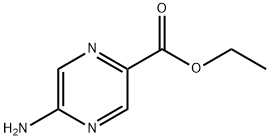In a chemistry laboratory, a researcher is examining the properties of various compounds. One of the compounds under investigation is dichloromethane (CH2Cl2). The researcher wonders, "Is CH2Cl2 polar?"
Derived Questions:
1.What factors contribute to the polarity of CH2Cl2?
2.How does the polarity of CH2Cl2 affect its solubility in water?
Is CH2Cl2 polar?
Related Products More >
-
- 108-80-5
- USD 50.0000
- 50kg
-
- 108-78-1
- USD 4.5000
- 25kg
-
- 4559-86-8
- USD 750.0000
- 170kg
-
- 77182-82-2
- equest For Quotation
-
- 70131-50-9
- equest For Quotation



 沪ICP备2021018848号-5
沪ICP备2021018848号-5

Answer: Yes, CH2Cl2 (dichloromethane) is a polar molecule. This is due to the difference in electronegativity between the carbon (C) and chlorine (Cl) atoms. Chlorine is more electronegative than carbon, causing the shared electrons in the C-Cl bonds to be pulled closer to the chlorine atoms. This results in a partial negative charge on the chlorine atoms and a partial positive charge on the carbon atom, creating a dipole moment and rendering the molecule polar.
Derived Question 1: What factors contribute to the polarity of CH2Cl2?
Answer: The primary factor contributing to the polarity of CH2Cl2 is the difference in electronegativity between the carbon and chlorine atoms. Additionally, the molecular geometry of CH2Cl2, which is tetrahedral with the two chlorine atoms and two hydrogen atoms bonded to the central carbon, also plays a role. The tetrahedral shape ensures that the dipoles created by the C-Cl bonds do not cancel each other out, leading to an overall polar molecule.
Derived Question 2: How does the polarity of CH2Cl2 affect its solubility in water?
Answer: The polarity of CH2Cl2 affects its solubility in water because "like dissolves like." Water is a polar solvent, with partial positive and negative charges due to the difference in electronegativity between hydrogen and oxygen. Since CH2Cl2 is also polar, it can interact with water molecules through dipole-dipole interactions, making it somewhat soluble in water. However, due to the relatively small size and low molecular weight of CH2Cl2, it is more commonly used as a solvent for non-polar or slightly polar compounds.
Notes on Usage and Applications:
When handling CH2Cl2, it is important to note that it is a volatile and flammable liquid. It should be stored in a cool, well-ventilated area away from sources of ignition. CH2Cl2 is commonly used as a solvent in various chemical reactions and in laboratory settings due to its polarity and solvent properties. However, care should be taken to avoid prolonged exposure or inhalation, as it can be harmful to health.
The polarity of a molecule depends on its molecular geometry and the electronegativity differences of its atoms. In CH₂Cl₂, the carbon atom is at the center, bonded to two hydrogen atoms and two chlorine atoms. Chlorine is more electronegative than carbon, and carbon is more electronegative than hydrogen. The electronegativity difference causes the C - Cl bonds to be polar, with the electron density shifted towards the chlorine atoms.
Although the molecule has a tetrahedral geometry, the two C - Cl bond dipoles do not cancel each other out because of the presence of the C - H bonds. The C - H bond dipoles are in the opposite direction but are not strong enough to counteract the C - Cl bond dipoles. As a result, there is a net dipole moment in the molecule, making CH₂Cl₂ polar. This polarity gives CH₂Cl₂ different physical and chemical properties compared to nonpolar molecules, such as its solubility in polar solvents and its ability to participate in dipole - dipole interactions.